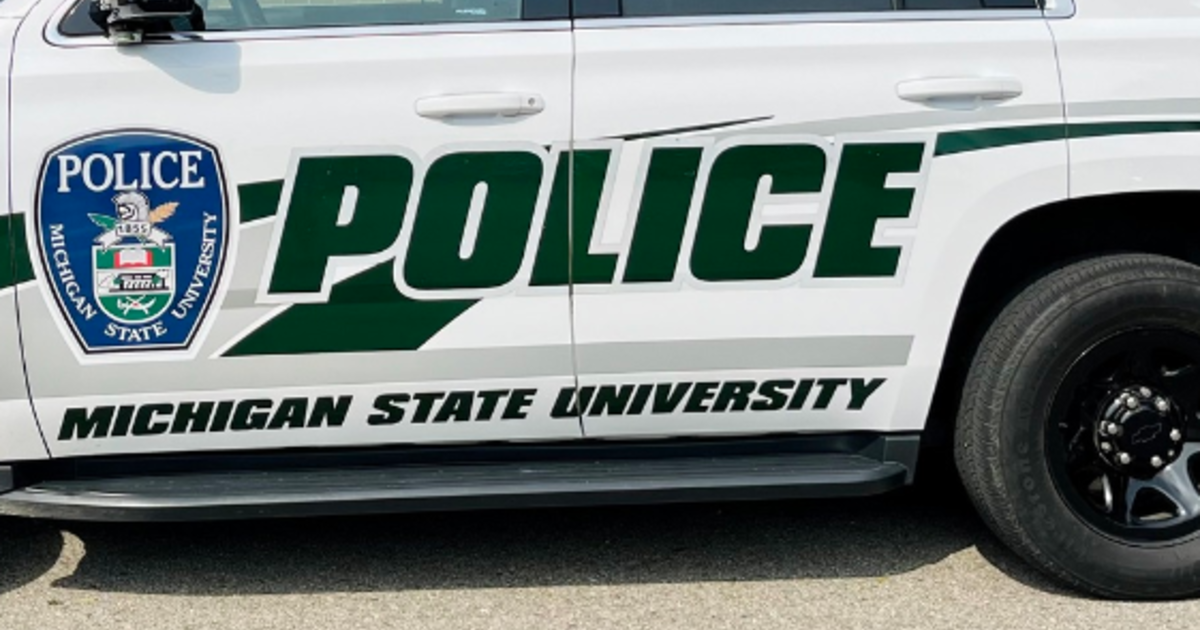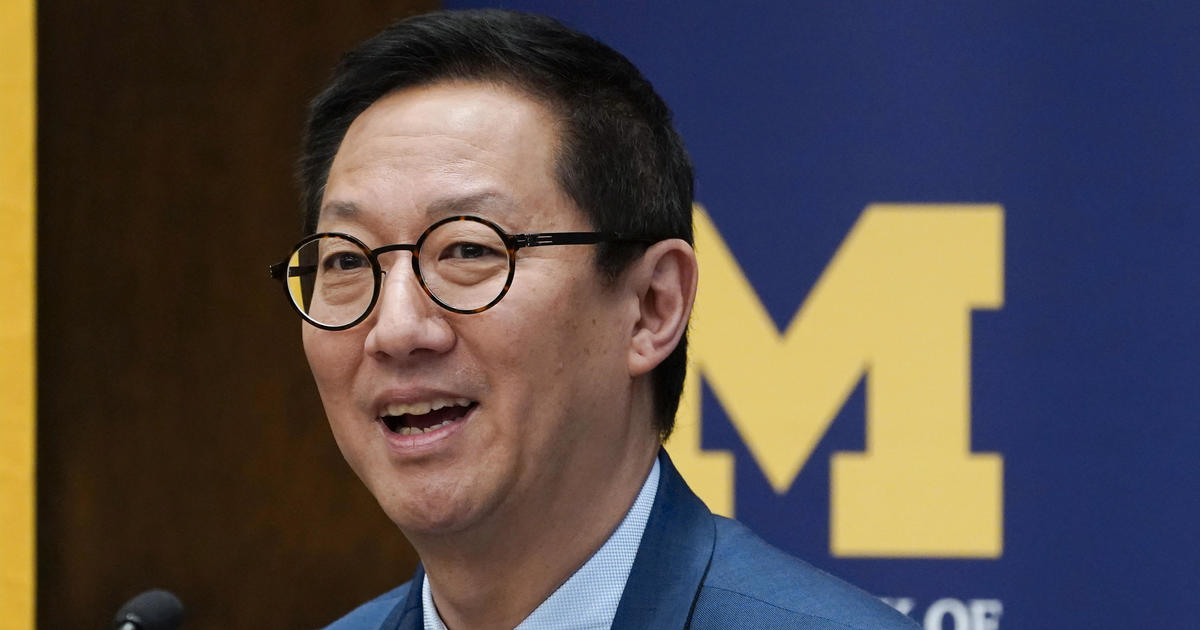MSU: Spartans Shine To Wrap Up Tech Tour '12
EAST LANSING -- It's a world-class research university, America's pioneering land grant college, the first place on the planet to study agriculture scientifically, and just passed a little-known school called MIT for No. 1 in graduate studies of particle physics.
So while it may be a rebuilding year at Spartan Stadium on Saturday afternoons, Michigan State University is and always will be a must-visit as long as there are Great Lakes Innovation and Techology Report Fall Tech Tours.
My drizzly Friday in East Lansing began at MSU's Facility for Rare Isotope Beams, a linear particle accelerator that will accelerate atoms close to the speed of light and then smash them into barriers. The result will be more detailed knowledge into the nature of matter and the universe -- and rare elements with major medical applications.
About 140 people are working on the FRIB project, and construction is finally under way, said FRIB project manager Thomas Glasmacher. The so-called "civil design" of the project -- the building that will house the science -- is complete, and 143 of 316 so-called "secant pilings" around the building footprint that will allow safe excavation below are in place, with more being added every day.
Because of Congress' inability to see eye-to-eye with the White House and pass a budget both sides can agree on, the project has been running on continuing resolutions, "but we will continue to make progress within that and we hope there will be a budget sometime."
That means spending $10 million for excavation, $48 million for the building shell, and $55 million for the mechanical systems, with bidding to begin next summer.
The shell of the building is scheduled to be completed by 2016. Then will come about $300 million in spending on the scientific gear that will make the massive atom smasher go. That construction is scheduled to be complete, and the FRIB fired up, in 2019.
"One good thing is that a lot of manufacturing is still in Michigan so we don't have trouble finding qualified machine shops -- there are a lot of good ones out there," Glasmacher said.
And when it comes to Washington, "we still have really good bipartisan support," Glasmacher said of the project's Washington backing. In the U.S. House, Republican Reps. Dave Camp, Mike Rogers and Fred Upton are major proponents, as are Michigan's two Democratic senators, Carl Levin and Debbie Stabenow.
Bartom Malow of Southfield is the project's construction manager, while Smith Group of Detroit did the civil design. Basically, the FRIB works by taking an atom and passing it through a plasma that knocks off a few its atoms, leaving it with a positive magnetic charge. Then a negatively charged metal plate is placed in front of the atom -- so the atom is magnetically attracted to the plate and rushes toward it. As the atom passes through a hole in the plate, the plate switches polarities to positive, so the atom is pushed away. Multiply that sequence by 400 of these so-called resonators, about a foot apart, all switching polarity at 80.5 million times a second, and you can get an atom up to an appreciable percentage of the speed of light.
Oh, and I didn't mention that this only works if you do it in really cold conditions -- like about 4 degrees above absolute zero, the temperature at which all atomic activity stops, about 450 degrees below zero Fahrenheit. So a plant to make ultra-cold liquid helium is also part of the FRIB.
One thing I didn't know is that the resonators' oscillation, 80.5 million times a second, or 80.5 megahertz, is just below the FM broadcasting band, so you can use essentially off-the-shelf FM radio equipment for a lot of the electronics.
Anyway you look at it, the FRIB is a major good thing for Michigan, from advancing medical science to our understanding of the universe to, oh yeah, hundreds of millions of dollars of spending in the mid-Michigan economy. And it's the kind of Big Science that only happens at big schools.
-----------------------------------------------------------------------
My next stop was with R. Mark Worden, MSU profesor of chemical engineering and materials science and a 26-year veteran of the MSU faculty.
And essentially, Worden wants to do this on an industrial scale: 4 CO2 + 36 H2 + 12 O2 --> C4H10O + 31 H2O.
You may recognize that first one -- CO2, carbon dioxide, a greenhouse gas. Mix that with hydrogen and oxygen -- obtained by cracking water, H2O, into its constituent atoms by electrolysis, using electricity from solar power -- and you get C4H10O, also known as isobutinol, a liquid relative of alcohol that burns and can be used as fuel, and a bunch of water.
"My focus has always been on adapting biology to engineering," said Worden, who got bachelor's degrees in cell biology and chemistry and master's and Ph.D. degrees in chemical engineering, all from the University of Tennessee. "The project we're talking about here is a good example of that."
The project has received $1.7 million in funding from the federal Department of Energy, and he's working with the MSU's Michigan Biotechnology Institute to scale up the work to industrial size.
"The idea is that large combusion sources like coal fired power plants would be a good soruce of carbon dioxide," Worden said. "But the reactor is the single piece I'm most involved with. The challenge, when you are using hydrogen and oxygen, is that when you mix those together they are explosive. Every now and then there is a spark and you can blow up a reactor ... not very desirable. My contribution was a new kind of bioreactor that never mixes the two gases togehter. We have an international patent pending on that. We keep the gases on seaprate sides of a chamber that contains the cells so the gases come in from different directions."
The great thing about isobutanol, Worden said, is that it "blends in pretty much any proportion with gasoline," unlike ethanol, which can only be mixed in small proportions without having to change components in gasoline engines. And it doesn't have ethanol's tendency to attract water, which can cause water contamination of gasoline-ethanol blends.
"It also has four carbons in each molecule rather than two carbons in each molecule like ethanol," Worden said. "That means it has less oxygen in it, which means higher energy content per molecule."
Oh, and by the way, what grows in the bioreactor to actually produce the isobutanol is a bacterium called Ralstonia eutropha, which metabolizes the hydrogen, oxygen and carbon dioxide. It's already somewhat famous for ability to produce biological polymers. A molecular biologist at MIT is Worden's partner on the project; according to Worden, he "is a world famous expert on the biology of this critter. I do the reactor part and he does the cloning part."
Whatever you say, doc. Just let's fill 'er up and keep 'em rolling!
--------------------------------------------------------
My next stop was down a floor and around a corner in MSU's sprawling Engineering Building, for a visit with Ramakrishna Mukkamala, an MIT graduate who's been at MSU since 2002 and is an associate professor of electrical and computer engineering.
Mukkamala is working on hemodynamics -- blood flows and blood pressure -- and advanced technology to measure them more accurately and less invasively.
"I started to see that I could apply some signal processing techniques to monitor hemodynamics, blood flows and blood pressure and circulation," Mukkamala said.
Existing devices, he siad, are inaccurate and too invasive.
There are plenty of good ways to measure blood pressure, Mukkamala said, even in very sick people -- but blood flow, measured as cardiac output, has proven very hard to measure.
"We're trying to analyze existing minimally invasive sensors on critically ill patients to accurately monitor cardiac output," he said.
The market certainly believes in his concepts -- the spinoff company created to commercialize the technology, Retia Medical, has received $7 million in private financing to develop the devices.
Retia is commercializing a device that will be implanted through the artery in the wrist.
"Our claim is greater accuracy," Mukkamala said. "We have competitive data where we bought our competitors' items, and there was significant inaccuracy, and ours were significantly more accurate."
Retia will sell a blood flow monitor at $10,000 to $15,000 per unit, plus disposable sensors to be implanted in patients for about $200.
The current market for such devices is about $200 million a year, though Mukkamala said Retia believes that could rise to $600 million if a better monitor was available.
Other possible applications for the unit include heart failure, measuring fluid buildup in the lungs, and monitoring patients after battlefield injuries.
Retia now has an office in East Lansing's tech incubator in the former Jacobson's store (which also unfortunately is also a former bookstore) on Grand River Avenue. And the company has several open positions. More at www.retiamedical.com.
Mukkamala credited several MSU and East Lansing-area staffers for their help in building the company -- Charlie Hassman and Kari Haldenwanger of MSU Technologies for their assistance in licensing the technology to Retia, John Balbach of the Michigan Small Business and Technology Development Center and Ruben Derderian of MSU Technologies for help in writing Retia's business plan, Jeff Smith of the East Lansing Technology Technology Innovation Center for finding space for Reetia and being "our champion."
Also, Bari Olivier of Michigan State and Jim Blum of the University of Michigan are conducting trials of the technology.
---------------------------------------------------------------
My last stop Friday -- and thus, the last stop of the 2011 Fall Tech Tour -- was Thomas D. Sharkey, professor of biochemistry, and his research into eco-friendly rubber and tires.
Sharkey is one of those guys who tried retirement, but it didn't really work. He got his undergraduate degree from MSU's Lyman Briggs College and a Ph.D. in plant research at MSU in 1980. Then he was away for 28 years -- Australia, Nevada, then the University of Wisconsin-Madison. Now an emeritus professor of botany at Wisconsin, he came to MSU in 2008.
"All along I've been interested in photosynthesis, especially carbon metabolism, and isoprene emission from plants," Sharkey said. "They are somewhat related, because they both have to do with the exchange of gases between plants and the atmosphere. Isoprene is a five-carbon molecule, the basic building block of the biggest array of chemical compounds made by plants. This includes steroids, cholesterol, plant scents, rubber. Rubber is isoprene molecule hooked together about 10,000 times."
Rubber, of course, comes from rubber trees. Henry Ford tried to build big rubber plantations in Brazil, where the plant is a native species, but commercial scale rubber farming didn't work well because the trees there are infected by a fungus. British colonists took rubber seeds to Malaysia, though, and planted big rubber plantations there, which is where most natural rubber now comes from.
Scientists synthesized isoprene from oil to make synthetic rubber beginning in the 1930s. Natural rubber is still better quality, though.
"The supply of natural rubber is under threat," Sharkey said. "If the fungus tha killed off the industry in Brazil ever got to Malaysia, we would have a huge problem."
Yet the demand for rubber is rising rapidly, especially as the car market in China and India explodes.
So, Sharkey says, "if we could make isoprene biochemically, we could go a long way toward alleviating that problem of supply."
How? "It's a lot like biofuel," Sharkey said. "Take some kind of sugar, feed it to an organism that has been genetically engineered to convert that sugar to isoprene and convert the isoprene off the top."
Pound for pound, rubber made this way would have a higher market value than any biofuel.
The limiting factor in doing so, Sharkey said, "turns out to be isoprene synthase, the very last enzyme in the pathway of converting sugar to isoprene. I have cloned isoprene synthases from a wide variety of plants, and I have studied their chemical mechanism and come up with ideas for improving them. This is a slow enzyme that tends not to have a good affinity for the molecule they intend to convert into isoprene. We're focused on that last step and how to make that enyme better."
Sharkey is working with a Maryland company called Zuvachem Inc. on improving this process.
"I think we're halfway along in making the organism do what we need it to do, three to five years from commercial quantities," Sharkey said.
Oh, and the critter being used to make the rubber is none other than Escherichia coli, the bacteria behind several nasty infections (but kinder, gentler strains of which live in your gut right now).
Sharkey said scientists dropped nine genes into a harmless strain of E. coli to get it to make isoprene. Other companies, he said, are using yeast to make the isoprene.
Sharkey also said he's working on another project to boost the input of biochemistry by making leaves create more starch.
------------------------------------------------------------------
And so that was it, my majorly cool visit to MSU, capping off a majorly cool nine days on the Michigan road in my never-ending search for what Michigan's going to be famous for next. Go green, and go white, and we'll see all of you colleges again next year. Oh, and look for coverage of a couple of special Tech Tour-style visits I have planned for both Lawrence Technological University and Kettering University -- both of which are comparatively in my backyard and which I can visit pretty much anytime -- in the weeks ahead.
For the full story of the Tech Tour, visit http://detroit.cbslocal.com/category/glitr-tech-tour-fall-2012/.



